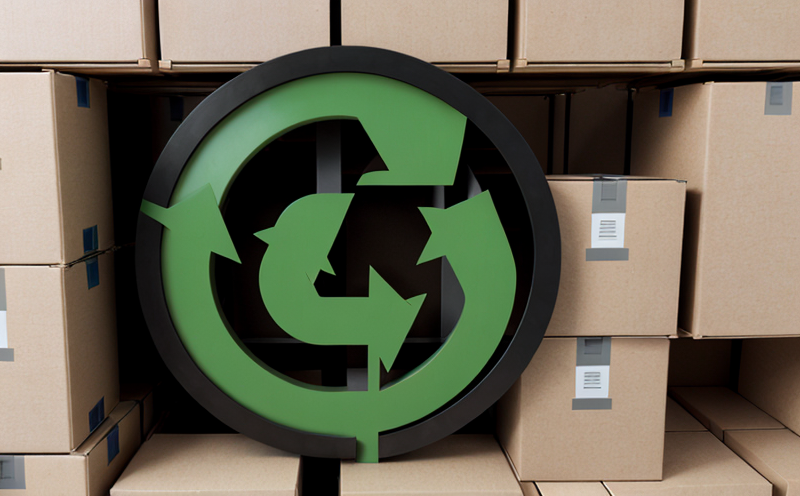ASTM E2129 Life Cycle Inventory Data Audits for Recycling Systems
The ASTM E2129 standard is pivotal in the waste management and recycling sector as it provides a framework to conduct life cycle inventory (LCI) data audits. This service ensures that the environmental impacts of recycling systems are accurately quantified, promoting sustainability and compliance with circular economy principles.
Life Cycle Inventory Data Audits using ASTM E2129 are crucial for several reasons. They help organizations identify and quantify all inputs and outputs at each stage of a product's life cycle, from raw material extraction to final disposal or recycling. This process is essential for understanding the environmental footprint of recycling systems and optimizing them for resource efficiency.
The audit also plays a critical role in ensuring compliance with international standards like ISO 14040 and ISO 14044, which guide organizations on how to plan, design, conduct, report, and use LCI data. By adhering to these standards, businesses can demonstrate their commitment to environmental stewardship and sustainability.
The service involves a comprehensive approach that includes the following steps:
- Identification of all components involved in the recycling process
- Data collection from various sources including suppliers, manufacturers, and end-users
- Analysis using life cycle assessment (LCA) methodologies to determine environmental impacts
- Validation of data against established criteria and standards
- Reporting of findings in a clear and actionable format
The audit not only helps in assessing the current state of recycling systems but also provides insights for future improvements. By identifying areas where resources are wasted or energy consumption is high, businesses can implement strategies to enhance their sustainability efforts.
| Step | Description |
|---|---|
| Data Collection | Involves gathering data from all lifecycle stages, including material sourcing, manufacturing, use phase, and end-of-life treatment. |
| Data Analysis | Uses LCA methodologies to analyze the environmental impacts of each stage. |
| Data Validation | Ensures data integrity through rigorous review processes. |
| Reporting | Presents findings in a user-friendly format, highlighting key areas for improvement. |
The results of these audits are invaluable for quality managers and compliance officers. They provide critical insights into the environmental performance of recycling systems, helping to make informed decisions that promote sustainability. For R&D engineers, this service offers a roadmap for innovation by highlighting areas where new technologies or processes can be implemented.
Additionally, the audit supports procurement teams in selecting suppliers who are committed to sustainable practices. By ensuring compliance with ASTM E2129 and other relevant standards, organizations can enhance their reputation and competitive edge in the market.
Why It Matters
The significance of life cycle inventory data audits cannot be overstated in today’s context of sustainability and environmental stewardship. As global waste generation continues to rise, there is an urgent need for more efficient recycling systems that minimize resource use and energy consumption.
The audit process using ASTM E2129 helps organizations to:
- Quantify the environmental impacts of their recycling processes
- Identify opportunities for improvement in material selection and processing methods
- Promote transparency in reporting lifecycle data
- Achieve compliance with international standards
- Support corporate social responsibility initiatives
- Enhance reputation and competitive advantage through sustainable practices
The audit also plays a crucial role in driving innovation. By identifying inefficiencies, organizations can explore new technologies and processes that not only reduce environmental impacts but also improve operational efficiency.
Moreover, the audit supports compliance with regulatory requirements. As governments around the world introduce stricter regulations on waste management and recycling, having an independent audit conducted using ASTM E2129 can provide a competitive edge by ensuring early compliance.
Scope and Methodology
| Step | Description |
|---|---|
| Data Collection | Involves gathering data from all lifecycle stages, including material sourcing, manufacturing, use phase, and end-of-life treatment. |
| Data Analysis | Uses LCA methodologies to analyze the environmental impacts of each stage. |
| Data Validation | Ensures data integrity through rigorous review processes. |
| Reporting | Presents findings in a user-friendly format, highlighting key areas for improvement. |
The audit process is designed to be comprehensive and rigorous. It begins with the identification of all components involved in the recycling process, followed by data collection from various sources including suppliers, manufacturers, and end-users. The collected data is then analyzed using life cycle assessment (LCA) methodologies to determine environmental impacts.
Data validation ensures that the information gathered is accurate and reliable. This step involves rigorous review processes to ensure compliance with established criteria and standards. Finally, the results are reported in a clear and actionable format, providing insights into areas where improvements can be made.
Industry Applications
- Waste Management: Audits help waste management companies to identify inefficiencies in their operations and implement sustainable practices.
- Recycling Facilities: Recycling facilities can use the audit results to optimize their processes and improve resource efficiency.
- Paper Mills: Paper mills can benefit from the audit by identifying areas where energy consumption is high and implementing strategies to reduce it.
- Plastic Manufacturing Companies: These companies can use the audit findings to explore new technologies that are both sustainable and cost-effective.
- Metallurgical Industries: Metallurgical industries can leverage the audit results to enhance their recycling processes and improve resource efficiency.
The audit is particularly beneficial for organizations looking to comply with international standards like ISO 14040 and ISO 14044. By ensuring compliance, these organizations demonstrate their commitment to environmental stewardship and sustainability.





